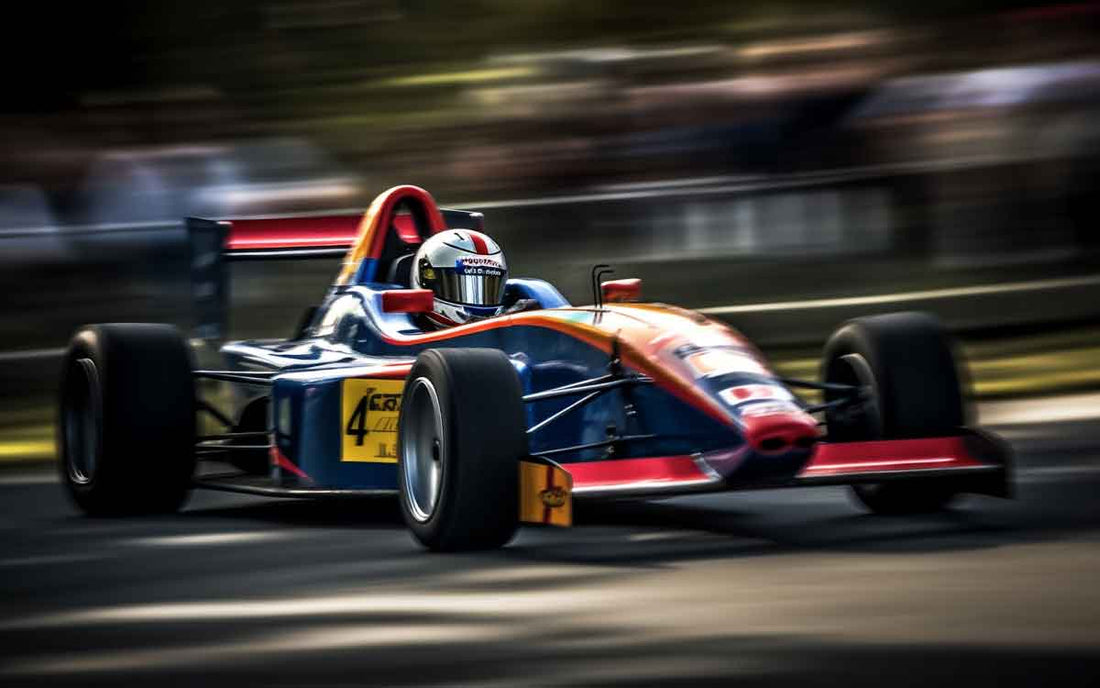Pitot tube may not deserve a second look. You may not notice it at all. But don’t be fooled by appearances. This protruding tube that looks like a misplaced TV antenna saves lives — specifically, the lives of the fastest racers on the planet: Formula 1 race car drivers.
Indeed, pitot tubes are such powerful instruments despite their rather drab looks. Knowing they’re also central to your safety when you fly may surprise you. Dubbed speedometers, pitot tubes give pilots the needed gauge of the plane’s airspeed. Enough to land everyone safely.
If all these sound confusing, fret not. In this post, we’ll walk you through the nitty-gritty of pitot tubes and show you how these flow sensors can help you when you’re up against extreme speeds. And win big time. Read on.
How Pitot Tubes Save Lives
While driving over 70mph on interstate highways in America (55 mph for other highways) may cost you a speed ticket, Formula 1 cars clocking 220 mph in the course of the race is no news. In the pursuit of winning, many go beyond those numbers.
But this is where a pitot tube is most beneficial. In the most challenging of landraces, the seemingly bland instrument is a lifesaver.
The Dangers of Blinding Speed
Indeed, an ordinary human may think such blinding Formula speeds elicit a massive adrenaline flow, providing out-of-this-world thrill and excitement. But the truth is: Formula 1 racing, despite all the glamour and glory, is one of the most dangerous sports on the planet.
A little miscalculation in the heat of competition and even the best and the brightest could fall. The numbers speak for themselves.
|
Over the years, the list of fallen driver enthusiasts piles up:
- Onofre Marimon (died aged 30 at the 1954 German Grand Prix)
- Jochen Rindt (died aged 28 at 1970 Italian Grand Prix)
- Jules Bianchi (died aged 25 at the 2014 Japanese Grand Prix)
While these deaths are truly tragic, they underscore the need for greater protection for these speedsters. And this is where a pitot tube is a must.

Pitot Tube to the Rescue
Formula 1 drivers need all the data they can get to make the right decisions in real-time in a race to be the fastest on land. Navigating through all that cutthroat competition, an F1 race car will accumulate over 300 sensors at various points and produce around 3 Terabytes of digital data in one race. Imagine that.
But one sensor stands out, measuring a crucial element in the race: airspeed. Here’s how a pitot tube is a lifesaver.
1. Pitot tube measures fluid velocity
A pitot tube, in essence, measures fluid velocity. Fluid, here, doesn’t specifically mean water. Instead, it refers to liquid, gas, or any material that could continuously move and deform under stress or any external force.
Invented by Henri Pitot (1695-1771), a French engineer in the 18th century, a pitot tube is two hollow tubes that sense pressure at distinct places within the pipe. However, the device has been improved to its modern form courtesy of the French scientist Henry Darcy (1803-1858).

The first tube measures the impact pressure (stagnation pressure), while the second measures static pressure. Fluid flow can be measured by taking the difference between these two pressure points.
But why measure pressure when you’re looking to measure speed and velocity? The answer lies in the Bernoulli Principle.
2. Pitot tube is based on the Bernoulli Principle
Simply put, the Bernoulli Principle states that changes in pressure can be equated to changes in velocity. Said principle was published in the book Hydrodynamics as theorized by Daniel Bernoulli (1700 - 1782), a world-renowned Swiss mathematician of the prominent Bernoulli family of think tanks.

Bernoulli’s research focused on the relationship between human blood flow and pressure, where he noticed that the height of blood up through a pipe is directly proportional to the pressure given to the pipe.
Thus, the relationship between pressure changes and fluid speed was established. As fluid changes speed, pressure changes with it.
In our application, the faster the air on top of a Formula 1 car as it races, the lesser the pressure becomes in the pitot tube. Such data can then be entered into a manometer which displays the velocity pressure for the driver to see.
3. Pitot tube greatly enhances Formula 1 cars
Pitot tubes are central in the airline industry. As sturdy as these differential flow meters (d/p) are, airplanes use them extensively as speedometers.
But an F1 car benefits a lot from the sensor too. Pitot tubes measure the speed of the wind flowing at the top of the car, which is usually affected by many factors (e.g., car speed, wind direction).
|
By observing pitot tube data, engineers gain a more profound knowledge of air movement. This allows them to design a car that achieves better aerodynamic balance. Not only should it be faster, but also, and most importantly, safer for the man behind the wheel.
And that’s how a simple pitot tube saves Formula 1 race car drivers’ lives.
Pitot Tube Key Applications
Not only is a pitot tube durable (has no moving parts), but it’s also economical and easy to install. Small wonder the sensor is used extensively in various industries:

- Determine airspeed in aircraft on flight
- Determine airspeed in cars (Formula 1)
- Determine a boat’s water speed
- Determine airspeed in wind tunnels
- Determine the flow of liquids in pipes and channels (industry)
- Determine airflow/liquid flow in ducts and stacks in construction
- Determine the velocity of a river
FAQs about Pitot Tubes
Why use a pitot tube on Formula 1 when you have a speedometer?
GPS mostly tracks today’s F1 car speed, but a pitot tube can measure airspeed on top of the car, which allows engineers to design a faster and safer vehicle.
Is pitot tube expensive?
Compared to other sensors (e.g., orifice plate), a pitot tube is inexpensive.

